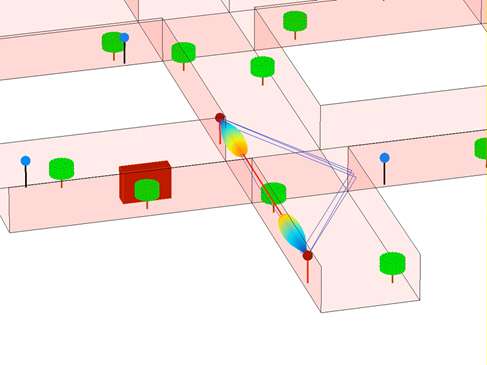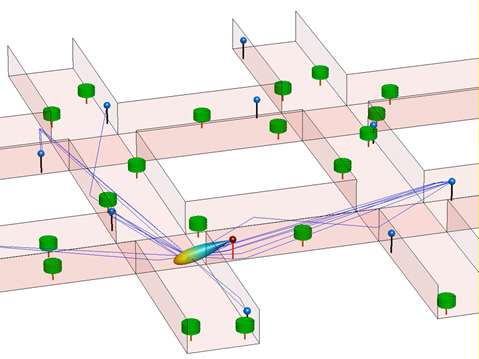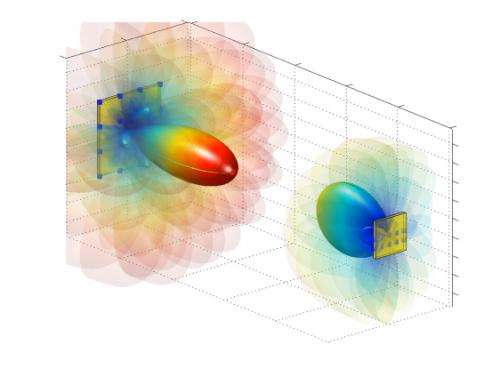Innovative millimeter wave communications to be demonstrated at London exhibition

Wireless data connections that exploit millimetre wave radio spectrum (30GHz to 300GHz) are expected to be used in worldwide 5G networks from 2020. The University of Bristol's Communication Systems and Networks research group has partnered with Bristol start-up Blu Wireless Technology (BWT) to develop this technology and they will demonstrate their innovative work at the Small Cells World Summit in London this week [10-12 June].
Millimetre wave radios use much higher carrier frequencies than those in current systems, such as 4G and Wi-Fi. The University and BWT radios transmit data approximately 50 times faster than the 2.4GHz Wi-Fi standard. At 60GHz there is significantly more unallocated spectrum, and this opens up the possibility of multi-Gigabit data rates to future mobile terminals.
The challenge at 60GHz is how to overcome the additional signal losses. If transmit powers and antenna gains were equal, at 60GHz the received signal would be 1000x weaker than a Wi-Fi signal. To address this challenge, millimetre wave systems need electronically steered high gain antennas to track users as they move within the network.
A demonstration of results from the first phase of work, supported through the West of England Local Enterprise Partnership Regional Growth Fund, will be showcased for the first time at the summit to be held at ExCel London.
Using a newly developed virtual network simulator the team will show how antenna beam steering supports robust point-to-point connections up to 400 metres. For 5G mobile access, the team will demonstrate multi-gigabit beamforming and mobile tracking up to 100 metres from the base station. In both cases beam forming is shown to overcome the harmful effects of blocking trees and buses.
Mark Beach, Professor of Radio Systems Engineering, Department of Electrical and Electronic Engineering, said: "This technology builds on a wealth of knowledge and expertise over the last 25 years in Smart Antenna systems and an in-depth understanding of radiowave propagation. Our rich mix of fundamental research and practical validation at Bristol makes us an ideal partner for industrially relevant projects such as this."

Andrew Nix, Professor of Wireless Communication Systems and Head of the, Department of Electrical and Electronic Engineering, added: "Our sophisticated ray tracing tools have been combined with the University's high performance computing facilities to enable the rapid analysis of complex millimetre wave systems. In particular, our simulators combine detailed channel models with antenna arrays and beam tracking algorithms to dynamically determine user performance in a virtual network."

Henry Nurser, CEO at Blu Wireless Technology, explained: "BWT has developed the Gigabit Digital Baseband necessary for millimetre wave communications to enter the mass market. At the Small Cell World Summit we're presenting some of the details behind our innovative system-level solutions, how this can be applied to solve the total cost of ownership (TCO) problems associated with backhaul for small cells and why Europe needs to re-think regulations for outdoor 60GHz networks."
Provided by University of Bristol



















